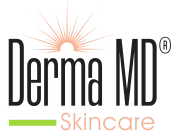Astaxanthin
astaxanthin extract. Astaxanthin, a xanthophyll carotenoid, is a secondary metabolite naturally synthesized by a number of bacteria, microalgae, and yeasts. The commercial production of this pigment has traditionally been performed by chemical synthesis, but the microalga Haematococcus pluvialis appears to be the most promising source for its industrial biological production. Due to its collective diverse functions in skin biology, there is mounting evidence that astaxanthin possesses various health benefits and important nutraceutical applications in the field of dermatology. Although still debated, a range of potential mechanisms through which astaxanthin might exert its benefits on skin homeostasis have been proposed, including photoprotective, antioxidant, and anti-inflammatory effects.
REFERENCE:
Sergio Davinelli,1,* Michael E. Nielsen,2 and Giovanni Scapagnini
Carotenoid (carotene pigment) found in plants, algae, and fish, particularly salmon, that functions as a potent antioxidant (Source: General Physiology and Biophysics, June 2007, pages 97-103; and International Journal for Vitamin and Nutrition Research, 1995, volume 65, issue 2, pages 79�86). Preliminary research suggests that astaxanthin may be able to prevent the oxidative damage to skin after exposure to UVA radiation (Source: www.naturaldatabase.com)
